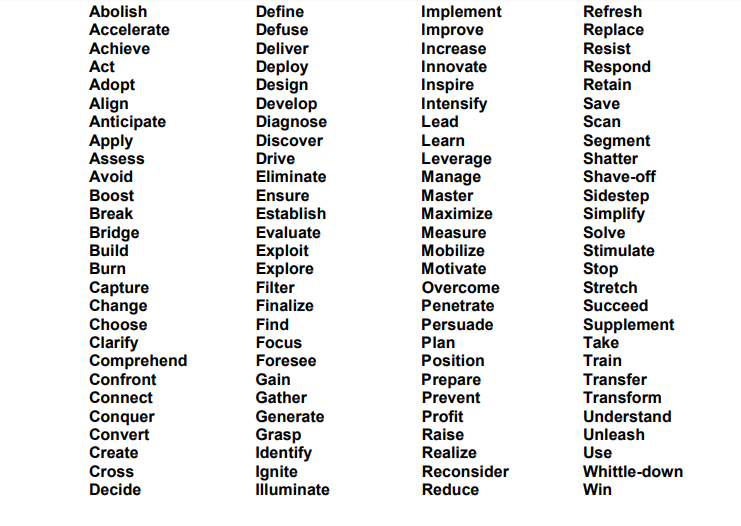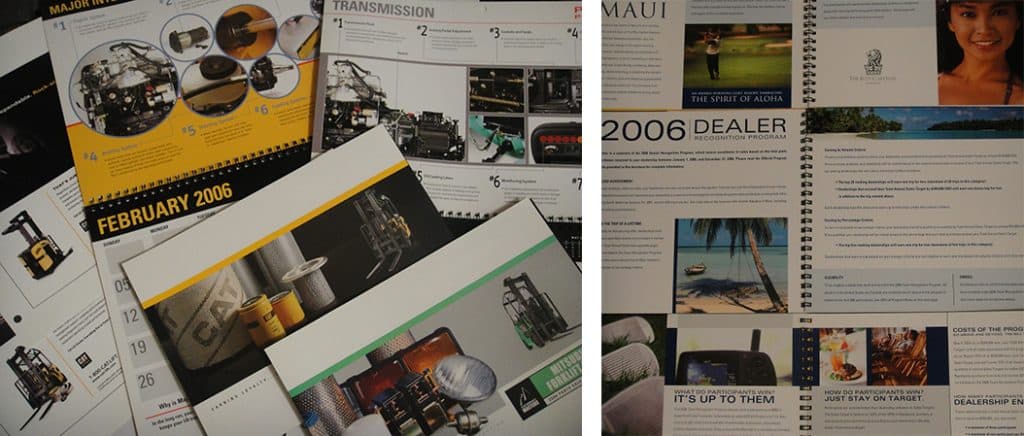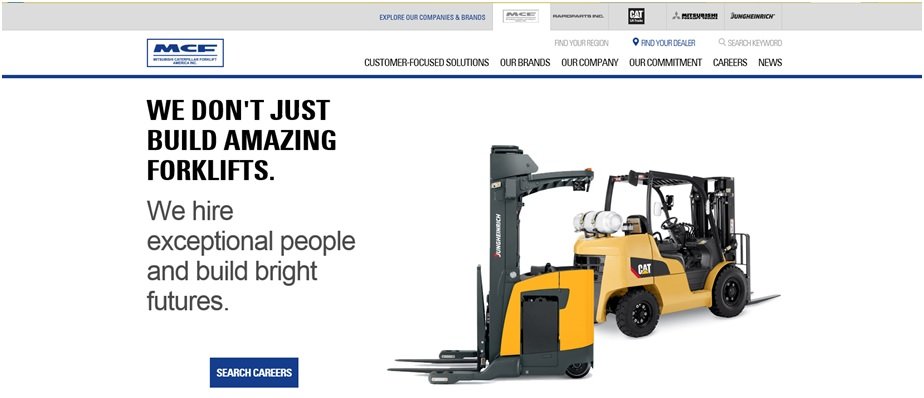Tag: Franchises
Keys to Small Business Marketing
Kimberly Smith, University of Houston
Small Business Development CenterEach year, about 400,000 new small businesses open their doors to the economic landscape in their communities. But according to www.bloomberg.com, a whopping 80 percent of these new ventures will fail within the first 18 months. What’s the difference between one energetic, inspired entrepreneur with an idea that succeeds and a similar one who just can’t seem to get his or her business off the ground?
To answer that question, we spoke with Kimberly Smith, director of marketing and publicity at the University of Houston Small Business Development Center. She shared her insights about strategic marketing tactics and how they help small businesses across all industries build their brand.
“If you’re an entrepreneur with a great idea, and you’ve had big sales at opening that later tapered off, you might be experiencing a combination of problems,” said Smith. “When business owners come to me for advice, I tell them in order to be successful, they have to have a well-planned, well-researched marketing strategy.”
According to Smith, if you’re a new or aspiring small business owner, there are five fundamental elements of a marketing strategy that will move you closer to achieving your business goals in the first year and beyond.
Marketing Strategy Do’s:
1. DO identify your ideal target market for your product or service.
It might be that everyone is your “target market,” but not everyone is ideal. Find out exactly who needs your service or product, who wants it, and who can afford it. Do lots of research, and find out exactly who fills those three categories.
“For example, when Apple started marketing their computers, they knew they wouldn’t be appealing to the cheapest consumers, so they used a different approach to marketing,” Smith said. “They advertised (their product) as a ‘work of art’ that would appeal specifically to people who would appreciate art — like graphic designers, illustrators, innovators, musicians. That made the market much smaller and easier to target.”
2. DO figure out How to reach your ideal target market.
Where are the people who need, want, and can afford what you’re selling? How can you get the word out to them?
“The best way to answer these questions is to do a lot of research,” Smith said. “So, if your ideal target market is professional women between the ages of 30-40, the next step is to figure out where they purchase. Online? In brick and mortar stores? Do they listen to certain TV or radio shows?”
Smith said that pinpointing the specific buying behaviors of your target market will lead you to the most effective places to spend your advertising dollars.
Follow up with social media. “Figure out which social media platform is the best fit for your product, and start posting there,” Smith said. “It takes time and effort, but it pays off.”
Helpful Hint: Call a TV or radio station, or a community newspaper — any publication that posts a website with banner ads. Tell them you’re looking at their ads, and explain which market you’re trying to reach with your product or service. They can tell you exactly who their ads will connect with, so you’ll know if your advertising money will be well spent there or if you need to keep looking.
Free Advice: “The librarian here at the Small Business Development Center at the University of Houston will run a competitive marketing analysis free of charge for any small business owner,” Smith said. “She’ll help you figure out the trends so you can market more effectively in your particular industry.”
3. DO use surveys.
If you’re in business, you have access to people. It’s always a good idea to ask them questions about your products and services.
“Even if you’re still at pre-venture stage and you don’t have actual customers yet, survey your friends and family,” Smith said. “Ask them if they think the price points you’ve set are acceptable. Get as much feedback as you can about that.”
Ask how often they might need or want the product or service you’re selling, and how they tend to receive information about new products — online, social media, flyers in the mailbox?
“That’s extremely useful information for your new business,” Smith said.
For new businesses that have already opened, Smith suggested a by-invitation-only special party consisting of a specific focus group of guests. “If you’ve opened, you can use your own place to bring customers in after hours, let them know how much you appreciate them, and ask them to answer a few survey questions,” she said. “The feedback you’ll get from this is invaluable.”
4. DO claim and maintain your online presence.
Too often, business owners believe their online profile ends at their website. “If you want to succeed, you need to get beyond your website and set up profiles on Yelp, Google, and the Yellow Pages,” Smith said. “Claim them. Take control of your online profile. Make sure all of them convey a consistent message about your business, and all the details are correct across all of them — your selling proposition, your business hours, your contact information.”
That also will positively affect your search engine optimization (SEO), which is essential for targeting your customers and driving traffic to your website.
“It helps to be at the top of the page when someone is searching for a business that has your products or services,” Smith said. “All the information should match. It’s surprising how many inconsistencies there are from site to site with basic information like store hours. That’s confusing to the customers. Your pages should be constantly monitored and maintained.”
5. DO create a marketing plan using these elements.
Smith said small business owners don’t always understand what she means when she tells them how important it is to create a marketing plan, but it just means pulling together the four previous points. “It’s just a way to make sure you’re finding your target audience, you’ve identified your unique selling points, and you’ve set goals with a plan to achieve them,” she said. “You’re not just selling. You’ve got an efficient, clear plan in place, and you’re progressing toward your goal.”
Marketing Strategy Don’ts:
Not only should new business owners take an active role in planning and implementing their marketing strategy, they also should be wary of traps that can undermine their efforts. When entrepreneurs run out of money, it’s often because they’re overconfident, their marketing message doesn’t connect with consumers, or they underestimate the need to keep up digitally.
Smith said the following poor practices are a recipe for new business failure.
1. DON’T make assumptions.
If a business owner assumes his product or service is so great that everyone will buy it, he’s in for a big disappointment, Smith said. “This shows a real lack of focus and research into the ideal target market. Let people try your product or service for free and get feedback. That tactic usually works very well and teaches the owner a lot about how people are receiving his product or service.”
2. DON’T design your own logo or own website.
Brand image is everything, and if it’s not on par with your competitors’, your target customer base will not take you seriously.
“Unless you’re a trained graphic designer, hire a professional to do your logo and your website,” Smith said. “People often think cheapest is best, but the smart thing is to set aside the money you need to get a good website and logo, and hire a very reputable person to do them.”
3. DON’T create too many social media profiles.
It’s better to have one or two well-maintained social media profiles that fit your business than to have a lot of profiles that don’t get any traffic.
“Your ideal target market can’t necessarily be reached on all social media platforms,” Smith said. “It’s impossible to keep posting on multiple social media pages, so choose one or two that match your products and services and post regularly. Don’t get on Pinterest if you’ve got a business or service that doesn’t apply.”
Hint: When the last post on a social media page is from a year ago, it could imply that you’re no longer in business, which causes customers to look elsewhere.
4. DON’T ignore bad reviews.
When customers leave a bad review on Yelp or Google, don’t think it won’t affect you. “When people search for your business, those reviews will come up,” Smith said. “Negative reviews deter people from your business, whether they’re true or not.”
She said it’s best to reply to each bad review and apologize for failing to meet expectations. Then offer something to make it right with the customer.
5. DON’T rely on referrals or word of mouth.
You work hard to earn a good reputation and have your clients tell their friends about you, but relying on them to do that is another trap that can lead to failure.
“It’s the ‘if I build it, they will come’ theory,” Smith said. “If you create a marketing plan and remain consistent, you do a good job with your customers, and you get lots of referrals and good word of mouth, imagine how well you’d do with advertising,” she said. “Advertising expands your customer base. If you’re already doing well, advertising will help you go beyond referrals and word of mouth. You can make enough money to hire more employees and go sit on the beach!”
The 108 Most Persuasive Words In The English Language
It’s a long known fact that the secret to persuasive writing isn’t in the adjectives, it’s in the verbs.
Copywriters know power verbs sell and convince.
Internally, we have a list of 108 verbs that we’ve been using for a good decade, and we recently thought we should share it with proper credit to the original author.
We found that although the list is being recirculated (and in many cases claimed as original by several different authors!), the original author is, in fact, nowhere to be found.
So, if anyone knows who wrote this, we’d love to know!
With or without the original author, it’s still a great list…here it is!

The 108 Most Persuasive Words In The English Language
According to legendary advertising man, Leo Burnet, “Dull and exaggerated ad copy is due to the excess use of adjectives.”
To prove it, he asked his staff to compare the number of adjectives in 62 ads that failed to the number of adjectives in Lincoln’s Gettysburg Address, and other age-old classics.
Here’s what he discovered:
Of the 12,758 words in the 62 failed ads, 24.1% were adjectives.
By direct comparison, Lincoln’s Gettysburg Address contains only 35 adjectives out of 268 immortal words – only 13.1% adjective-to-total-word ratio.
Winston Churchill’s famous “Blood, Sweat and Tears” speech rates even lower and has a 12.1% adjective ratio (81 adjectives from 667 words).
Burnett found that similar ratios applied to great works such as The Lord’s Prayer, the Ten Commandments, and the Preamble to the U.S. Constitution. Conclusion: Use more verbs, not adjectives.
Verbs increase the pulling-power and believability of ad copy.
That’s why it makes sense to keep this 108-VERB “CHEAT-SHEET” close-by whenever you begin to draft your next space ad, sales letter, Website, or email campaign.

Still unsure how to incorporate these verbs into your marketing campaign? Or, perhaps, you just don’t have the time?
Then consider hiring a team of professional copywriters to do it for you! Talented advertising and marketing writers can take mediocre content and use power verbs to turn it into engaging copy that meets goals and produces results.
COMMUNICATING WITH CUSTOMERS IS NO LONGER NOT AN OPTION- Tips for Navigating the Online Customer Experience
Gone are the days when a customer walked away from a less-than-stellar dining, shopping, or service-related experience with head held low and disappointment weighing heavy on her shoulders.
Now, an unhappy customer can spread word of a business blunder in the blink of an eye by posting a bad review on Yelp, a scathing video testimonial on YouTube, or an unflattering post on Facebook.
Depending on the day and time, that post/video can go viral, causing pain and suffering for the business that did not seize the opportunity to right the wrong.
It takes insight, patience and a whole lot of customer communication to stay on top of the game these days.
Consider this scenario (names have been changed to protect the innocent):
Jim buys a coupon online for national brand carpet cleaning service.
Prior to the fast-approaching coupon expiration date, Jim calls to set up an appointment to have his carpets cleaned. Customer service representative claims not to know about the availability of online coupons and states she will have someone get back to Jim.
Three days go by – expiration date looms – Jim is sweating. Jim calls back, slightly irritated that the customer service representative did not follow through on her promise. This time, the customer service representative states that the coupon will not be honored.
Jim fumes, then contacts the online customer service department for the coupon company. He considers posting a scathing review of national carpet cleaning service on Yelp, as well as his Facebook and Twitter accounts.
However, before he has time to type up the review, the coupon company contacts the carpet cleaning company about the situation and follows up with Jim. Less than an hour later, a local franchise owner with said national brand contacts Jim, apologizes, clears the coupon with national, and sets up an appointment to clean Jim’s carpets that very week.
Carpets are cleaned and Jim is happy – coffee stains are gone.
Jim writes a great review for carpeting cleaning service on Yelp, Facebook, Twitter…and posts a picture of his spotless living room carpet on Instagram.
Scenarios like this happen millions of times each day, but they don’t always end with happy customers, clean carpets, and positive Yelp reviews.
Even though it seems simple enough to turn the situation around, companies often miss the opportunity to convert an unhappy customer into one that, at the very least, does not write a bad review on social media.
Putting the “Us” in Customer Experience
Evolving digital tools and technologies are strong drivers for changing consumer habits and expectations.
With access to what seems like an infinite amount of information available at the touch of a screen, it’s not surprising that customers expect an efficient purchase process and immediate solutions when problems arise.
But it’s important to note that, while customers’ use of technology may have changed, their expectations for customer service have remained the same: they want to be treated with respect, and they want to feel connected to the brand, the company, the product they are buying.
In their September 2015 article, “Building a design-driven culture” authors Jennifer Kilian, Hugo Sarrazin, and Hyo Yeon state that, in many cases, customers prioritize the experience of buying and using a product over the performance of the product itself.
For retailers and service providers, this means it’s critical to know how your customer experience stacks up against the competition.
You’re likely not the only company offering your product or service, after all.
What makes you stand out? Why do your customers choose you? Why do some of them choose to leave? Why did they choose your competitor when your offerings are so similar?
Though not a new concept, the idea of assessing “customer experience,” is a valiant attempt at understanding what, in a nutshell, a business needs to focus on to retain customers and remain in business.
In his October 2010 article, “Understanding the Customer Experience,” Adam Richardson states that, whether it’s on online, through email, on the phone or in person, customer experience is “…the sum of how customers engage with your company and brand, not just in a snapshot in time, but throughout the entire arc of being a customer.”
Social Media Marketing is the new Direct Mail
So how does today’s retailer stand out from the competition and build positive customer relationships?
In the past, relationship-building took place face-to-face or door-to-door: Ingvar Kamprad, the founder of IKEA used to work the cash registers in his stores to better understand his customers and their concerns.
Today, IKEA uses several digital platforms to connect with customers, such as Share Space, a site that encourages customers to share photos of spaces created using the brand’s self-assembled furniture, and “How to Build” videos that show customers how to assemble the furniture.
Even the company’s more traditional printed catalogue is available in an interactive, online version and an accompanying app with a “Place in Your Room” feature that allows users to try out furniture pieces in a virtual sense.
These advanced marketing techniques enhance and expand the customer experience, but never stray from the IKEA mantra: The customer comes first.
Billy Robinett, Vice President of Houston Pizza Venture, LLC – the company that owns the Papa John’s pizza franchise – says that, before the Internet, Papa John’s connected with customers through hand-delivered flyers and direct mail pieces, as well as through sponsorship of school and community events and sports teams.
Those tactics may have worked very well in the pre-Internet era, but today’s tech-savvy customers are less likely to shop at storefronts or pay attention to “snail mail.”
Connecting with customers now means manning the virtual cash registers (i.e., customer support chat lines) or reaching out through viral videos, Facebook posts, or targeted email campaigns.
Robinett says Papa John’s still maintains its strong connections with schools and organizations, but the company has also shifted some of its focus to online ordering and sales to accommodate its customers’ increasing use of web and mobile technologies.
Papa John’s is also embracing social media as a way to create and strengthen its relationships with pizza lovers.
For example, Papa John’s uses Twitter’s customer service tools to scan content on that platform for certain phrases, such as “I am hungry” or words to the effect that someone had a bad experience at any fast food restaurant.
When those phrases are detected, a message is sent directly to the sender, such as, “Hungry? Why not try one of our pizzas – get 10% off with this code,” or “We are sorry to hear you had a bad experience. Have a pizza on us with the code.”
“Technology just opened another door for us to reach our customers,” Robinett said. “We still do a lot of things to create emotional connections with customers, such as showcasing our partnerships with local sports icons like JJ Watt and James Harden, and talking directly to our customers on social media.”
In other words, if you want to get a high customer experience score, all it takes is a shift in thinking and some virtual elbow grease.
It’s not that much different than working the cash register or hanging flyers on door handles.
The common denominator between the “old” and the “newer” is communications. Without communications tools, your efforts may fall flat.
Position Your Business for Success
Here are five communications concepts – and tools for implementation – to proactively position your business and connect with current and potential customers in the virtual world:
1. Catch your customer’s eye
If you’re not hanging out where your potential customers are hanging out, the potential for getting their attention is slim to none.
Various methods of advertising, media and public outreach, and one-on-one interaction are parts of the equation; but more and more a strong online presence and strategy is an essential element of a business’ marketing plan.
A clean, clear and user-friendly website is a must; as well as informative and engaging content on social media platforms.
Here are a few tips for creating eye-catching, engaging websites and landing pages:
- Make sure your landing page(s) is crystal clear about what product(s) or service(s) you offer. Attention spans have grown short, and customers are likely to leave a website immediately if the value proposition isn’t clear. Try UsabilityHub to test the efficacy of your landing page headline.
- Don’t forget a user-friendly mobile website. A growing share of web traffic is from mobile devices. You don’t want to drive away potential business because on-the-go customers are concerned that they won’t be able to shop or reach you on their smartphones.
- Utilize tools like Qualaroo to get feedback about what’s working and what’s not on your website, and the reasons for both.
- Make it easy and fun for customers to engage with you on social media. Provide direct connections to your social channels through your website, and monitor them closely with Tweetdeck or Hootsuite. Keep this in mind –social media is another way for people to interact in a one-on-one format, so if you go days without replying to a customer’s question, comment or request, it is on par with not returning a message on your answering machine from the days of yore.
2. Be human, not machine
Put yourself out there, be bold and engage with your customers, particularly when they are not satisfied. Don’t use acronyms or industry-speak. Be relaxed, yet professional. Demonstrate that you care and that you’re improving their life in some way.
Communications tools that help humanize your digital presence include:
- Use live chat on your website so that you can talk directly to potential customers who have questions or are shopping around and want to get a feel for what you do and how you do it. For many people, Live chat is a first step toward building a relationship with a company. Based on that experience, they may be willing to take the next step.
- Although many cyber shoppers prefer live chat or email, some want to speak directly to a company representative by phone, so ensure that you have a contact phone number on your website and other marketing materials.
- Provide training so that your employees are well versed on personalizing a customer’s experience. There are several customer relation management software platforms available that allow you to keep track of customer contact details, time and date of interactions, and many have email and website interface capabilities so that you can interact in a variety of ways.
- Make sure that your communications products – digital or paper – have content and graphics that are brimming with personality. People trust brands they know. If the voice of your website copy is bland or cold, you are missing a valuable opportunity to build a connection.
- Experiment with email marketing using tools like , which make it easy to create subscriber forms and send email to your web subscribers. Again, engaging content is key in all communications, including those sent to customers through email.
3. Build their confidence
A business owner knows what his or her company does best.
Don’t be afraid to focus on what you are good at, WHY you do it, and perhaps most importantly, why it will help customers have a happier, simpler, fuller, more informed life.
Customers want and need to know WHY you’re better than all the rest – so tell them. Tweet this
And, telling them why you do it is the icing on the proverbial cake.
Your story sets you apart from the rest, gives you a human face and can set the stage for a long, loyal relationship.
- Post blogs on your website that provide information about trends in your product line or industry, or that offer useful information to your customers and potential customers. Focus on positive messages – readers on your website want to be encouraged and shown the benefit of what you provide instead of focusing on negativity.
- Give your customers the floor! Provide them with an easy avenue to write and post a review on your website. The benefits are two-fold: You are one of the first to see the review and can respond to negative feedback quickly, which may result in the customer taking down the review or at least modifying the content. Secondly, many shoppers trust reviews and recommendations from their peers, so a good review may go a long way toward selling your product for you. Be sure to include the reviewer’s name and company, if they allow.
- Make sure your web copy is current and clean. More is not always better. Consider hiring an experienced consultant to assist in this process – they are good at what they do and bring a fresh eye to the process.
4. Put a face to your name
As any good reality show illustrates, people like to know what other people are all about and what makes them tick. The same can be said for the businesses they choose to patronize.
If a company keeps customers at arm’s length, then the customer never establishes a bond with the products or services, and can be easily swayed to the competition.
There are myriad ways that you can involve your customers, from videos to events to a fun contest that you advertise on your website and social media accounts.
- Post personalized videos on your website. Start with your business’ “birth” story and take it from there. Remember the customer as you are producing and editing these videos – few people are willing or able to watch a 30-minute documentary on any one subject, but will engage in shorter, personal videos about your employees, how you source your product, and what community organizations you support.
- Use colorful photographs and graphics to communicate your brand to shoppers. Don’t be afraid to try unique and even quirky methods, but always remain true to your brand image. In other words, don’t try to be something you’re not!
- Create a newsletter that provides content on your latest and greatest products and company news.
- Create an online customer community where your customers can gather in a web-based environment to discuss problems, post reviews, brainstorm new product ideas and engage with one another about your company’s products, services and brand. offers an online customer community platform that allows you to monitor it from social media so that you can provide input when needed, and gather valuable customer insights.
- Participate as a sponsor or volunteer in community events. Serve as a mentor at your local elementary, middle or high school. The more you get your face out there, the more customers you may draw to your company because many enjoy aligning themselves with businesses that are dedicated to making a difference in their community.
5. Avoid “turtle syndrome”
Don’t pull your head in and hide when you hear – or see – the words, “I never got…” or “This is not what I ordered…” or even the more general “I am not happy with…”
View these situations as problems to be solved so that a) you improve your product and service; and b) you gain a customer for life.
- Pick up the phone, or respond to the email, text message or social media post that outlines the customer’s concern, and immediately jump in with both feet and work with your customer to find a solution to the problem.
- Scan social media platforms for company reviews of all types – good, indifferent or bad, and respond immediately and directly to the reviewer in a positive way. That proactive stance can go a long way toward winning back a customer, and gaining additional customers who witnessed the interaction on social media.
- Be proactive and ask your customers for feedback. This can be accomplished in many ways – through online surveys ( Monkey is a good source), during live chat or customer service calls, through social media channels or in person. This allows you to draw information from customers who have not provided feedback on their own, but who may have good suggestions from a user’s point of view.
Today’s business climate demands more of business owners and their employees, but the interaction with customers has its benefits: repeat sales, rising profits, and hopefully, long-lasting relationships.
When you feel the responsibilities of the customer experience process weighing heavy on your shoulders, recall the famous words of Sam Walton, founder of the mega-giant retail chain Wal-Mart:
“There’s only one boss. The customer. And he can fire everybody in the company, from the chairman on down, simply by spending his money somewhere else.”
Key to your company’s success is each franchisee’s understanding of company values and goals.
What information do they need from you in order to gain and maintain that understanding?

The Writers For Hire will help you develop positive and clear franchisee or dealer communications, such as central training documentation, “active listening” campaigns, as well as conflict resolution material.
- Your new writing team includes a project manager, writer, and editor who work collaboratively, becoming a seamless extension of your in-house teams.
- Award-winning project management software means we can organize massive amounts of content efficiently.
- Our team is comfortable with quick turnaround times.
- Writers are fast learners and can easily take on complex long-term and last-minute projects.

Industry Experience
Would you like to consolidate sporadic franchisee and dealer communications from a variety of sources? We can help you develop a centralized communications platform that uses a consistent voice to convey company expectations.
Our writing team has decades of experience in corporate communications. Many of our writers have journalism or communications degrees and have written for franchisors such as Hilton, Logan Farms, Carpet One, and Pinot’s Palette; and dealerships such as Mitsubishi and Caterpillar Forklift Trucks.

Example Projects
Guidebooks
Detailed guidebooks outline company culture, expectations, and policies. Using clear and positive messaging, these guidebooks lay the basis for franchisee understanding, preempt conflict, and provide for positive franchisor-franchisee relationships.
Incentive Materials
We write material that will motivate your franchisees to participate in incentive programs that promote individual and corporate success.
Press Kits
In this challenging time for journalism, we make it easy for overtaxed media outlets to give you ample coverage. Use the press to your advantage and garner enthusiastic media response with one of our carefully curated press kits.
Blogs and Social
Instant communications do your work for you. Highlight current franchisee successes. Support newcomers with tutorials solving common dilemmas. Share common culture and core values.
Request A Quote
or
Call 713-465-6860
Got Legs? Creating an Ad Campaign with Staying Power
Quiz time: What’s the key to crafting an advertising concept that works?
A.) Finding a hot celebrity to endorse your product or service
B.) Changing your tagline and logo every six months so consumers won’t get bored
C.) Coming up with a basic concept and tagline that’s flexible, memorable, and can be used for the long haul
OK, class. Time’s up. Put down your pencils.
The correct answer is “C”.
Today’s lesson is about creating an advertising campaign that has “legs” – meaning, a concept that’s flexible enough to grow and change while maintaining your company’s branding and identity. A campaign like that is worth way more than getting a hot celebrity spokesperson, and it’s a lot easier than trying to reinvent yourself twice a year (and confusing/alienating customers in the process).
Not sure if your campaign has legs? Ask yourself a couple of questions as you go:
• Does this campaign lend itself well to several types of ads? For instance, if you have a very elaborate concept that only works, say, on television, you may be thinking too narrow. Most (but not all) good campaigns with legs are flexible enough to work in print, on the radio, and on TV.
• Is my tagline too specific? A solid tagline is critical to a campaign that can change with the times – and with the company. For example, let’s say you have a smallish auto repair client that specializes in brake jobs, but they hope to expand in the next year or so and add things like transmission repair, body work, etc. A tagline like “It’s Brake Time” (yes, that’s corny, I know – just an example, OK?) might work for a while. But, when it comes time for expansion, you’ve got two choices:
1. Reworking the company’s identity altogether (meaning, a new advertising concept).
2. Cramming new concepts into the old concept. As in, “It’s Brake/Transmission/Body Work Time.” Doesn’t exactly roll off the tongue, does it?
”
• Is my campaign too trendy? If you’re looking for real staying power, I’d caution against getting too dependent on popular culture for your next ad concept. Hanging your whole campaign on a popular song/reality-TV star/catchphrase might seem like a good idea at the time, but it’s an easy way to look dated fast.
An ad campaign with legs always looks fresh. Need a few sources of inspiration? Check out these great campaigns with “legs.”
“For everything else, there’s Mastercard”: A great, flexible tagline that lent itself to an almost unlimited range of situations and storylines.
The Geico Caveman: Okay, so maybe the TV show wasn’t such a good idea. But, as an ad concept, it worked to help Geico carve out an identity.
The Absolut Vodka Ads: I haven’t seen these in a while, but they were everywhere in the 90s. Personally, this campaign is one of my all-time favorites – these ads were so simple in concept, but you just had to notice them.
Have a favorite “campaign with legs”? Leave us a comment and let us know!







